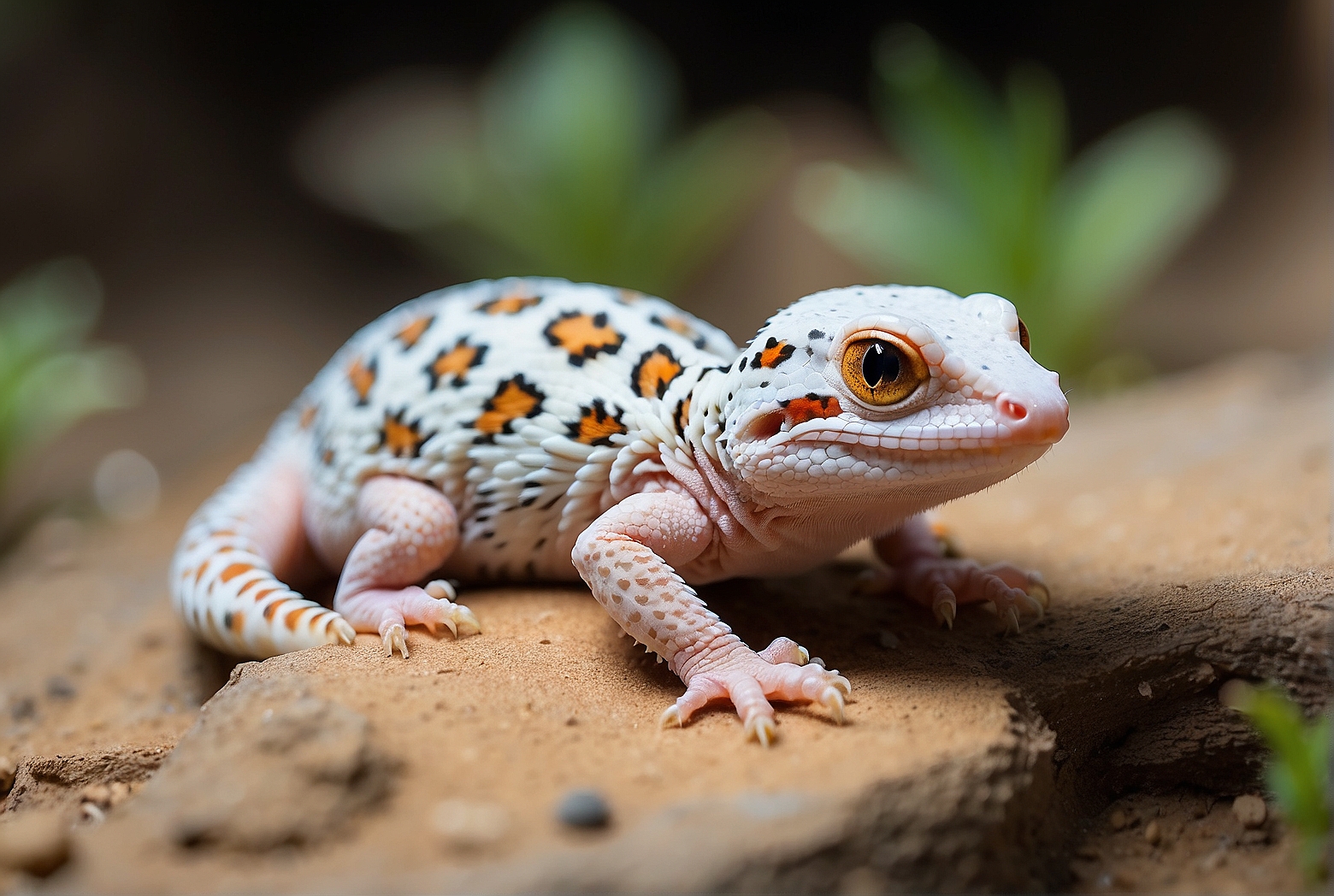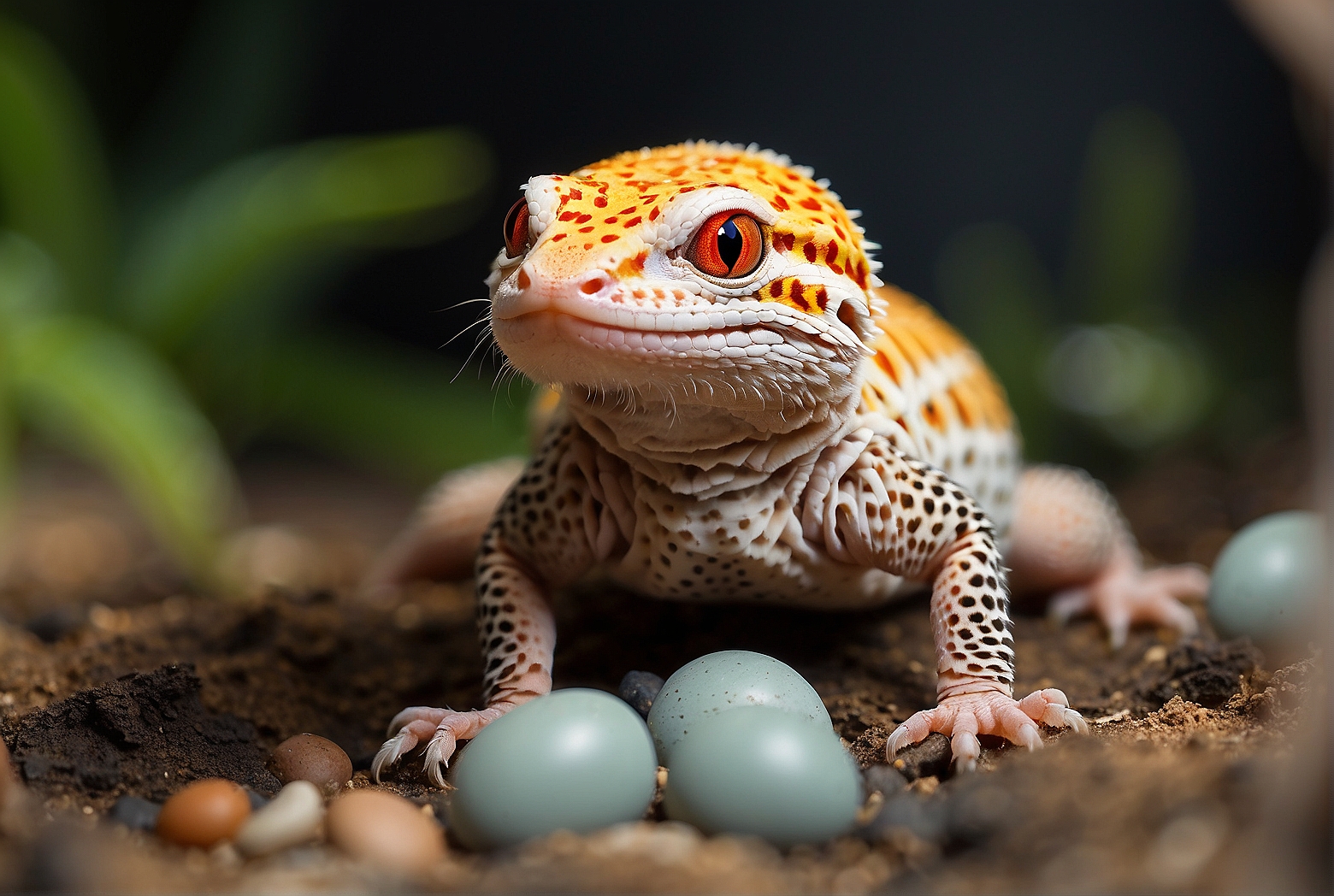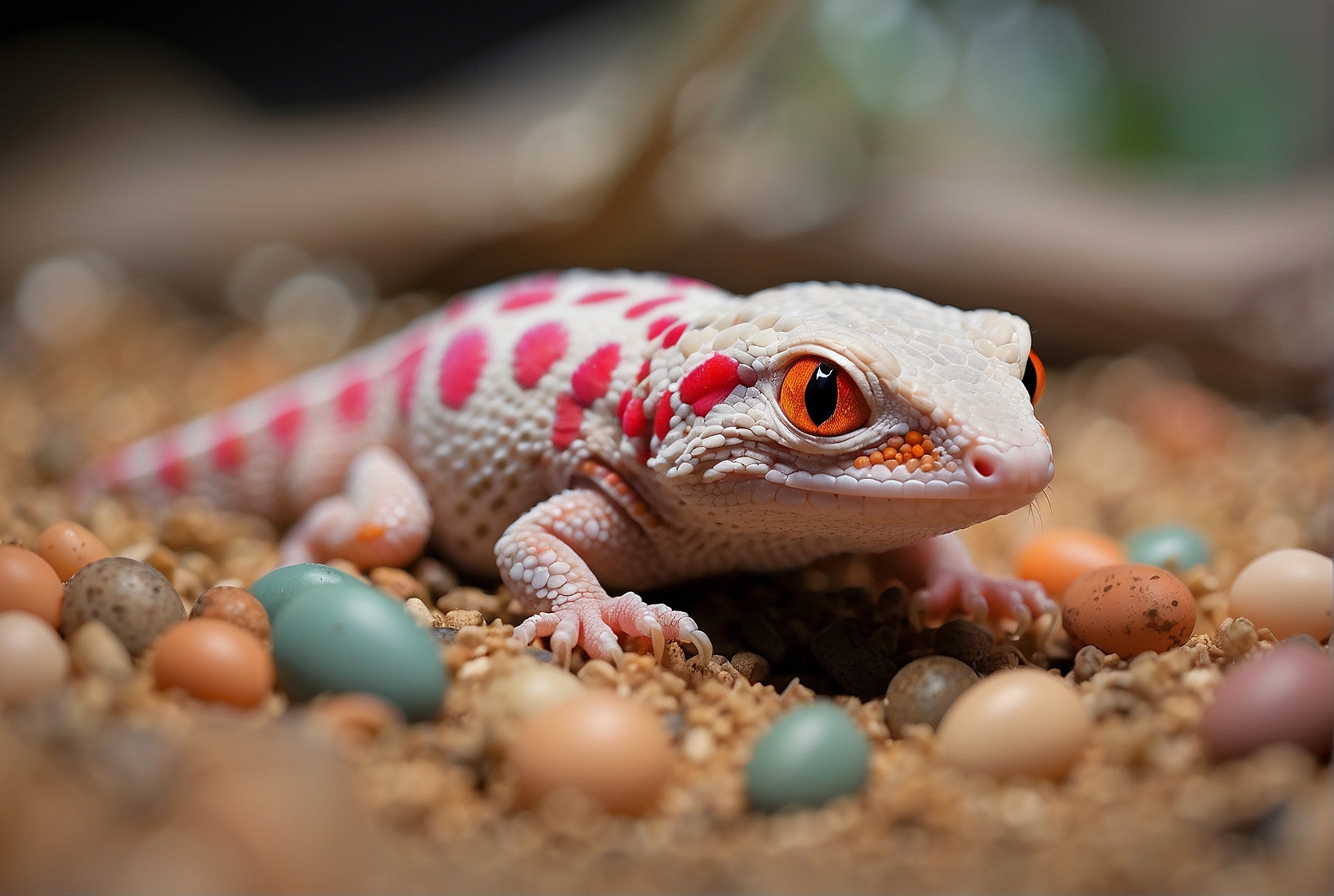If you’ve recently acquired leopard gecko eggs, you may find yourself wondering how to determine if they are fertile. Knowing whether the eggs are viable or not can be crucial in ensuring successful incubation and hatching. In this article, we will explore several key indicators that can help you confidently determine the fertility of leopard gecko eggs. From examining the appearance and texture of the eggs to observing specific developmental signs, this guide will equip you with the knowledge to identify if your eggs hold the potential for new life.
Appearance of the Eggs
Egg Color
Leopard gecko eggs are typically white or off-white in color. The color of the eggshell can vary slightly depending on the genetics of the parents. It’s important to note that the color of the eggshell does not necessarily indicate fertility. Fertile eggs can be any shade of white, while infertile eggs may also appear white.
Egg Shape
Leopard gecko eggs are oval or elliptical in shape. They are usually rounded at one end and slightly pointed at the other. The shape of the egg is important because irregularly shaped eggs may indicate potential issues with development or fertility.
Egg Size
The size of leopard gecko eggs can vary depending on the individual gecko and the clutch size. Generally, leopard gecko eggs are around 1 to 2 inches in length. Larger eggs may indicate healthier or more developed embryos, while smaller eggs may suggest potential issues.
Egg Development Time
Incubation Period
The incubation period for leopard gecko eggs is typically between 35 to 90 days, although it can vary depending on various factors such as temperature and humidity. It’s important to maintain proper incubation conditions to ensure optimal development of the embryos.
Signs of Development
As the eggs develop, you may notice changes in their appearance. Fertile eggs will show signs of development such as veins and blood vessels becoming more visible within the shell. A healthy embryo will have a distinct dark spot, which indicates the gecko’s developing body.

Egg Candling
What is Egg Candling?
Egg candling is a technique used to examine the internal development of fertile eggs without compromising their integrity. By shining a bright light or flashlight through the eggshell, you can observe the embryo’s growth and determine fertility.
Tools needed for Egg Candling
To perform egg candling, you will need a bright light source such as a flashlight, a dark room, and a safe, clean surface for handling the eggs. Make sure to use a flashlight with adjustable brightness to avoid overheating the eggs during the candling process.
How to Perform Egg Candling
To candle the eggs, choose a dark room or place the eggs inside a dark container. Hold the flashlight against the pointed end of the egg and shine the light through the shell. Rotate the egg slowly to observe the internal development, including veins, blood vessels, and the embryo itself.
Interpreting Results
When examining the eggs with candling, fertile eggs will show signs of development, such as visible veins, dark spots, or even movement within the egg. Infertile eggs will appear clear or with no signs of development. It’s essential to candle the eggs regularly throughout the incubation period to monitor their progress.
Egg Discoloration or Odor
Mold or Fungus Growth
During the incubation period, it’s crucial to check for any signs of mold or fungus growth on the eggshells. Mold or fungus can develop due to excess humidity or poor ventilation in the incubation environment. If you notice any discoloration or fuzzy patches on the eggs, it’s important to act quickly to prevent further damage to the embryos.
Unpleasant Odor
Another indicator of potential issues with the eggs is the presence of an unpleasant odor. Fertile eggs should not emit a foul smell. If you notice a strong and unpleasant odor coming from the eggs, it could be a sign of bacterial or fungal infection. In such cases, it’s best to consult an expert for advice on how to proceed.

Egg Movement
Egg Rotation
Leopard gecko eggs require regular rotation to ensure even distribution of heat and moisture during the incubation process. You can gently rotate the eggs once or twice a day, making sure not to disrupt or damage the growing embryos inside. Rotating the eggs also prevents the embryos from sticking to the inner shell, which can hinder their development.
Visible Movement
As the embryos develop inside the eggs, you may observe slight movements when candling the eggs. These movements can include wiggling or subtle shifts. However, it’s important to handle the eggs with utmost care to avoid causing any harm to the embryos.
Emits Sound or Vibrations
Listening for Sound
Some reptile species’ eggs, including leopard geckos, may emit faint sounds as the embryos grow and develop. To listen for these sounds, carefully hold the egg close to your ear in a quiet environment. These sounds are often very faint and may require a trained ear to detect. The presence of sounds is a positive sign of embryo development.
Feeling for Vibrations
In addition to listening for sounds, you can try feeling for vibrations. Gently cup the egg in your hand and pay attention to any subtle vibrations or movements you might feel. Vibrations can indicate that the growing embryo is healthy and active inside the egg. However, be cautious not to apply too much pressure or movement that could harm the developing gecko.
Embryo Development inside the Egg
Heartbeat
Leopard gecko embryos have a visible heartbeat during their development. When candling the eggs, you may be able to see the pulsating movement of the heart. The heartbeat is a reassuring sign of a healthy and developing embryo.
Veins and Blood Vessels
As the embryos grow, their circulatory system develops, resulting in the appearance of veins and blood vessels inside the egg. These structures become more visible over time, indicating proper embryo development.
Movement of the Embryo
During the later stages of development, you may observe movements within the egg when candling. The embryo may twitch, wiggle, or rotate inside the egg. These movements are signs of a healthy and active embryo.
Consulting an Expert
Reptile Veterinarian
If you have concerns about the development or health of leopard gecko eggs, it’s always advisable to consult with a reptile veterinarian. They have the expertise and specialized equipment to conduct thorough examinations and offer professional guidance to ensure the best possible outcome for the eggs and embryos.
Experienced Breeders
Experienced leopard gecko breeders can provide valuable insights and advice based on their own experiences. They can offer tips on proper incubation conditions, troubleshooting potential issues, and best practices for the well-being of the eggs and hatchlings.
Herpetological Societies or Forums
Joining herpetological societies or online forums dedicated to leopard geckos can connect you with a community of experienced reptile enthusiasts. These platforms provide a supportive environment to seek advice, share experiences, and discuss concerns related to leopard gecko egg development and breeding.
Egg Hatching
Pre-Hatching Behavior
As the eggs near the end of their incubation period, you may notice certain pre-hatching behaviors in the embryos. These can include increased movement and activity inside the egg, as well as audible chirping sounds. These behaviors are indicators that the hatchlings are preparing to emerge from their shells.
Pipping
“Pipping” refers to the process of the hatchling breaking through the eggshell. You may notice a small crack or hole in the eggshell where the gecko is starting to emerge. It’s crucial not to assist the hatchling during this stage, as they need to complete this process independently to strengthen their muscles and lungs.
Assisting the Hatchling
While it’s important not to intervene during the pipping stage, there may be instances where a hatchling is struggling or experiencing difficulty in fully emerging from the shell. In such cases, it’s recommended to consult an expert or a reptile veterinarian for guidance on how to provide the necessary assistance without causing harm to the hatchling.
Proper Incubation Conditions
Temperature
Maintaining the correct temperature is crucial for the successful development of leopard gecko eggs. The optimal incubation temperature for leopard gecko eggs is around 82 to 88 degrees Fahrenheit (28-31 degrees Celsius). Deviations from this temperature range can result in delayed development, developmental abnormalities, or even failure to hatch.
Humidity
Leopard gecko eggs require a controlled level of humidity throughout the incubation period. Ideally, the humidity should be maintained at around 80% throughout most of the incubation process. However, it’s essential to lower the humidity to around 60-70% during the pipping and hatching stages to prevent excessive moisture build-up and potential complications.
Incubation Medium
Choosing the right incubation medium is vital for the well-being of the eggs. A common and reliable medium for leopard gecko eggs is a mixture of vermiculite and water. This medium helps retain moisture while providing a suitable environment for the eggs to develop. It’s crucial to maintain the appropriate moisture level in the incubation medium to ensure successful hatching.
Incubator Setup
Using a dedicated incubator can streamline the incubation process and help maintain stable conditions for the eggs. An incubator should have reliable temperature control, a hygrometer to monitor humidity levels, and sufficient space to accommodate the eggs and allow for easy rotation. Regular monitoring and adjustments to the incubator settings are crucial to ensure optimal incubation conditions.
In conclusion, understanding the different aspects of leopard gecko egg development is crucial for successful breeding and hatching. By carefully observing the appearance, movement, and development of the eggs, as well as providing appropriate incubation conditions and seeking expert advice when needed, you can greatly increase the chances of hatching healthy hatchlings. Remember to always handle the eggs with care and prioritize the well-being of both the embryos and the adult geckos throughout the process.
